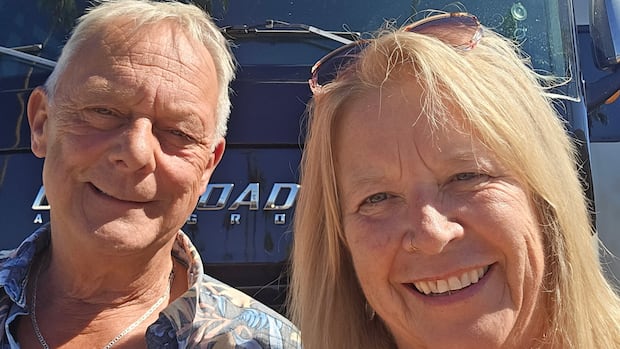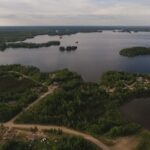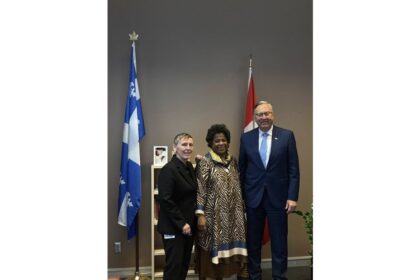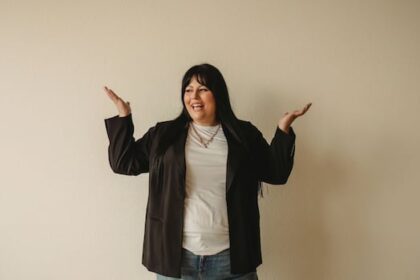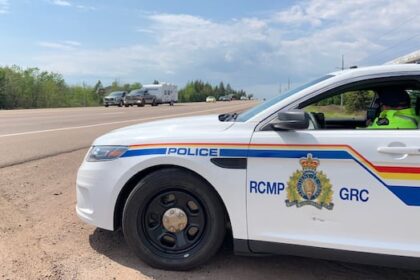Several Canadian snowbirds reported they were fingerprinted and photographed at the U.S. border this month when registering for their winter stay, which U.S. Customs and Border Protection (CBP) told CBC News is now standard procedure. Jacquie and Steve Ree of Ladysmith, B.C., arrived at the Peace Arch Border Crossing between Surrey, B.C., and Blaine, Wash., on Oct. 9. The snowbirds knew they’d have to comply with a new registration requirement for travellers staying in the United States longer than 29 days. So when a CBP officer said they could complete the process at the border, the couple agreed, unaware of what lay ahead. Jacquie Ree said they were sent to secondary inspection where their motorhome was searched.“I’m watching them open all our hatches, and we’re thinking, ‘Oh my god,’” she said. “They went through our whole RV.”Ree says she and her husband waited in line for 1.5 hours, only to be told by a second CBP officer they couldn’t register at the border. But when they were about to leave, a third officer said he could register the couple, and proceeded to photograph and fingerprint them for data collection purposes. “I thought, ‘Jeez, I hope I don’t have anything on my record they’re going to find,’” said Ree, adding that she didn’t.The couple was charged $60 US total for their completed registration.Ree said she feels the fee is a “bit of a money grab,” and found the process frustrating as CBP officers had conflicting notions about whether they could register travellers. “They didn’t really know what they were doing,” she said. “I felt bad for them.”Continued confusionConfusion over the registration rules has been mounting ever since U.S. President Donald Trump issued an executive order earlier this year requiring many foreign visitors staying 30 days or longer to register with the U.S. government. Those who don’t comply could face fines of up to $5,000 US, or jail time. The requirement has been in effect since April. However, as the new snowbird season kicks off, this is the first time many Canadian snowbirds are dealing with the rules — resulting in some uncertainty and frustration. Air travellers are typically exempt from the registration requirement, because they’re issued an electronic arrival record (I-94) when entering the U.S. However, land travellers often don’t receive one.WATCH | Canadian snowbirds ‘insulted’ by new Trump administration rule:Canadian snowbirds ‘insulted’ Trump will enforce registration policySnowbirds say they are insulted that the Trump administration will begin enforcing an existing law for Canadians that requires anyone crossing a land border who is staying more than 30 days to register with U.S. immigration authorities.A CBP online post, updated on Oct. 2, presents land travellers with two options to obtain their I-94: They can pre-apply through the I-94 website or the CBP One app within seven days before entering the United States, or they can register at the border. CBP spokesperson Jessica Turner told CBC News that whichever method they choose, travellers will be charged $30 US each, and officers will photograph and fingerprint them at the border — all part of the I-94 application process. “These measures are required under U.S. immigration law to enhance border security, verify travellers’ identities, and ensure compliance with U.S. entry and exit requirements,” said Turner in an email to CBC News.But immigration lawyers and snowbird organizations say there’s another option for land travellers with long-term stays: If border officers let them enter the U.S. without an I-94, they can register online at their destination by filling out a U.S. Citizenship and Immigration Services (USCIS) form called G-325R.The form asks travellers a lengthy list of personal questions, such as their U.S. address, email and marital status. It must be completed within 30 days of arrival, and there’s no fee and no fingerprinting requirement for Canadians. U.S. immigration lawyer Jennifer Behm says if snowbirds pre-register online or register at the border, they’ll likely be sent to secondary inspection, which automatically means they’ll be fingerprinted and photographed. (Berardi Immigration Law)U.S. immigration lawyer Jennifer Behm says it will be up to individual CBP officers to decide whether they will insist travellers apply for their I-94 at the border or grant them the option of completing the alternative G-325R form at their U.S. destination.”It’s completely at their discretion,” she said. Snowbird Ree said she was told at the border that she could fill out the G-325R form online, but she chose instead to register at the border. However, when snowbirds Brenda Paige and her husband, Dan, of Calgary arrived at the U.S. border in Sweet Grass, Mont., on Oct. 2, there was no mention of the G-325R form option. Instead, she says they were automatically sent to secondary inspection so that a CBP officer could help them complete the I-94 application process. “He just said, ‘OK, who’s going to go first?’” Paige said. “It just seemed like he had a list of things that had to be done.”When snowbirds Brenda and Dan Paige of Calgary arrived at the U.S. border in Sweet Grass, Mont., on Oct. 2, they were automatically fingerprinted and photographed as part of their registration process. (Submitted by Brenda Paige)Paige said the couple was photographed, fingerprinted and charged $60 US total. She said no part of the process was presented as optional. “We want to keep coming back every year, so we just did it.”Another snowbird, Caroline Horne of Burlington, Ont., said she and her husband had a completely different experience at Peace Bridge border crossing in Buffalo, N.Y., on Wednesday.She said the couple told the border officer that they planned to stay in Florida for about 30 days, and he let them enter with no mention of a registration requirement.“Nothing came up other than what do we do for work and do we have alcohol or tobacco,” Horne said.CBC News sent Horne a link to the G-325R form, which she promptly filled out. Separate departments causing confusionCBC asked CBP’s Turner about the G-325R form option. She dismissed it. “It does not replace the requirement for an I-94, nor is it relevant to the entry process for Canadian citizens,” said Turner.Lawyer Behm attributes the confusion over registration options to the fact that two separate immigration agencies, CBP and U.S. Citizenship and Immigration Services (USCIS), are involved in the process. “They’re not always fluid in the way that they operate or how their operations or decisions impact each other,” said Behm, a partner at Berardi Immigration Law in Buffalo, N.Y.She says if snowbirds pre-register online or register at the border, they’ll likely be sent to secondary inspection which automatically means they’ll be fingerprinted and photographed to verify their identities. “When you go through the secondary inspection office, it’s part of their general course of action,” she said. Behm says snowbirds who instead complete USCIS’s G-325R form when in the U.S. may find it a more seamless experience.“If you’re savvy with a computer … it’s not an overly cumbersome application.”WATCH | Trump administration sued over registration requirement:Trump admin sued over travel rules that have snowbirds fumingThe Trump administration is being sued over its looming requirement for travellers to register with the government if they stay 30 days or longer. Set to begin April 11, the rule has alienated many Canadian snowbirds who now say they plan to leave the U.S. because of it.‘So many questions coming in’Stephen Fine, president of the company Snowbird Advisor, which runs a resource website, says he will be tracking how the registration process unfolds this season, so he can update snowbirds. “There’s so many questions coming in,” he said. “We get dozens of emails weekly about this issue.”Fine says he’s concerned that some snowbirds may be forced into applying for an I-94 at the border, and not be offered the alternative: registering online once in the U.S.“I feel like there may be certain CBP officers that won’t give you the option or give you the impression that you don’t have [another] option,” he said.Snowbird Paige, who wasn’t given another option at the border, said she didn’t mind the process, including the fingerprinting and photo scan.“I wasn’t worried about it. I’ve not done anything wrong.”Canadians already in the U.S. can check this CBP webpage to see if they were automatically issued an I-94 upon entry.
Canadian snowbirds fingerprinted and photographed at U.S. border as part of new requirement
